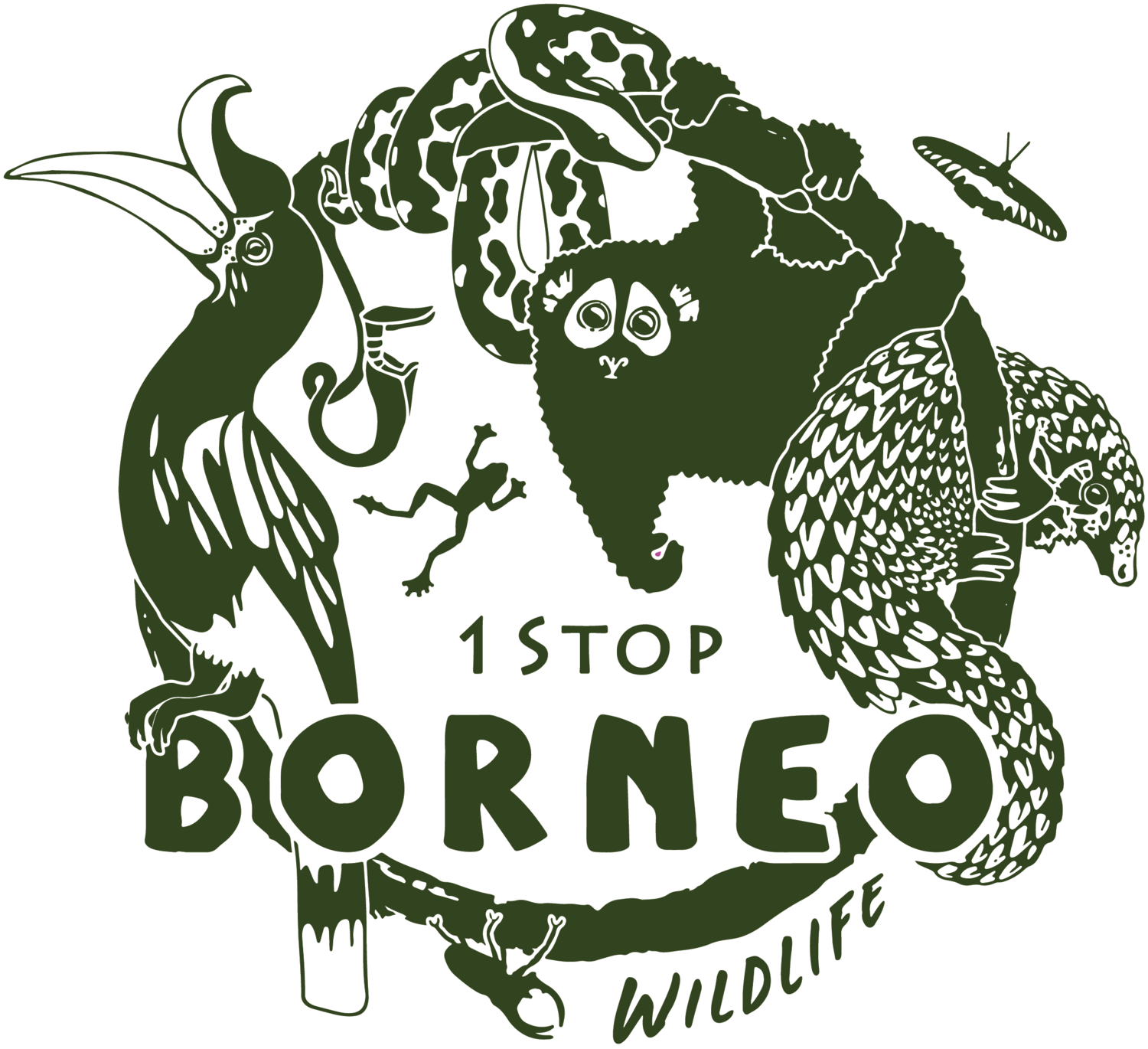Abstract
Hornbills (Family: Bucerotidae) are one of the iconic animal groups in Borneo, forest-dependent and playing a significant role in the tropical rainforest ecosystem. Here, we aim to explore the hornbill species present in the rainforests of Tawau Hills Park (THP), Sabah. We performed two months of field survey using existing trails as survey transects. Detected hornbills were identified and recorded. We recorded all eight Bornean hornbill species. THP together with the adjoining Ulu Kalumpang Forest Reserve to the north provide nearly 800 square kilometers of forest habitat, representing an important hornbill conservation area. Of the eight species, three are classified as Critically Endangered or Endangered in the IUCN Red List. We sighted White-crowned Hornbills Aceros comatus and Black Hornbills Anthracoceros malayanus frequently flying into the oil palm plantation to the south to feed on oil palm fruits. Finally, we note the need to identify and restore wildlife corridors in the plantation-forest landscapes of Borneo.
KOTA KINABALU: When school reopens and face-to-face classes resume, teachers in SMK Balung Tawau hope to see most of their students adopting new environmentally friendly practices such as going plastic-free.
Its principal Arbin Setta said this is in response to a “challenge” from NGO 1StopBorneo Wildlife that is trying to push for a plastic-free community in Sabah, starting with schools.
“1StopBorneo Wildlife asked if we would be interested in participating in its programme to realise this vision.
Penulis: Ram Nathan1, Martin Parry2, Chun Xing Wong2 and Shavez Cheema2
(1 Sabah Softwoods Berhad, 1StopBorneo Wildlife)
Pengenalan
Gajah Bornean (Elephas maximus borneensis) adalah gajah terkecil di dunia. Hal ini kerana, ukurannya yang sangat kecil berbanding dengan sepupu mereka yang jauh lebih besar di Afrika, mereka sering dikenali sebagai gajah gergasi Borneo. Mereka hanya dijumpai di bahagian Kepulauan timur laut, dengan sebahagian besar populasi tersebar di wilayah pesisir timur Sabah. Populasi yang dianggarkan hanya 1,500-2,000, walaupun penelitian baru akan dimulakan tidak lama lagi untuk menentukan jumlah mereka sekarang, yang akan diketuai oleh The Sabah Wildlife Department. Ini akan melibatkan kajian di seluruh negeri mengenai gajah pygmy dan utan dalam tempoh 24 bulan, berakhir pada tahun 2022. RM1.5 juta telah diperuntukkan untuk program ini yang merupakan sebahagian daripada strategi baru yang bertujuan untuk menyelamatkan gajah pygmy Sabah dan orang utan (Fong, November 2019).
Penulis: Shavez Cheema and Martin Parry, 1StopBorneoWildlife
Menurut keterangan Alfred Russel Wallace mengenai perjalanannya di 'Kepulauan Melayu', beliau banyak menerangkan mengenai dia mempunyai keberanian, sering melakukan perjalanan laut yang berbahaya yang mana dia perlu mengikut pergerakan angin dan arus yang berlaku, dan bergantung pada kebolehannya sebagai pelaut. Dia juga sangat taat dan, walaupun pertama kali datang ke S.E. Asia sebagai pengumpul seperti kumbang, burung, dan rama-rama. Dalam buku klasiknya kita dapat membaca kisah terperinci mengenai fauna, flora, dan masyarakat di rantau ini.
Tawau: Destinasi Utama melihat Mamalia di Borneo.
Penulis: Shavez Cheema dan Martin Parry dari 1StopBorneoWildlife
Sejak abad ke-21 sehingga tahun 2020, aktiviti pemerhatian mamalia di Borneo menunjukkan peningkatan populariti yang stabil walaupun populasi mamalia itu sendiri mengalami penurunan. Kumpulan pemerhati yang teratur biasanya datang untuk melihat kucing liar, tupai terbang, primata, musang, dan banyak lagi. Ketika mereka tiba di Borneo, mereka biasanya akan menuju terus ke negeri Sabah…
Tawau: a key mammal-watching destination in Borneo.
Authors: Shavez Cheema and Martin Parry of 1StopBorneoWildlife
During the 21st century, until 2020, mammal watching in Borneo had shown a steady rise in popularity although the populations of the mammals themselves have often been declining. Organised groups of watchers usually come to observe our wild cats, flying squirrels, primates, civets and more; and when they arrive, they normally head for Sabah. Improving transport and logistics has meant that well Sabah’s Parks and other well known ‘mammal spotting’ areas are more accessible than before; lowland and montane forests, rivers and coastlines can often be explored on organised tours. Kinabalu National Park, Kinabatangan River and Danum Valley Conservation Area, are examples of well-established destinations for wildlife tourism despite being surrounded by extensive cultivation, especially palm oil plantation. Others, such as Deramakot Forest Management Unit, have been developed to combine sustainable conservation with agricultural business, in this case selective logging for timber.
This is our latest conservation project in Sabah and it needs a bit of explanation. There is a growing attention now being given to the role of fig trees in the maintenance of biodiversity in the rainforests of Borneo; this will be better understood by referring to Quentin Philipps’ planned new publication on the Figs of Borneo (publication date to be confirmed).
Reading Alfred Russel Wallace’s descriptions of his travels in ‘The Malay Archipelago’, tells us much about the man: he had courage, often undertaking dangerous sea journeys where he was at the mercy of prevailing winds and currents, and relying on the skills of local seamen. He was also very observant and, although he first came to S.E. Asia as a collector, mainly of beetles, birds and butterflies, in his classic book we can read detailed accounts of the fauna, flora and human societies of the region.
Rajah Brooke’s Birdwing (RBB) is Malaysia’s national butterfly, being found in rainforests of Peninsular Malaysia as well as in Sabah and Sarawak. In his book The Malay Archipelago, Alfred Russel Wallace describes how he named the butterfly after James Brooke, the first ‘White Rajah’, after enjoying his hospitality in Sarawak; this was in 1855 but of course it would have already been very familiar to many local people before that date because it is such a large and attractive insect.
Before we go any further, I wish to make something clear: my love for the Sunda Pangolin takes the form of wishing to conserve it; I want to protect it from misguided people who still think it is acceptable to kill it for food or to use its scales in traditional Chinese medicine.











